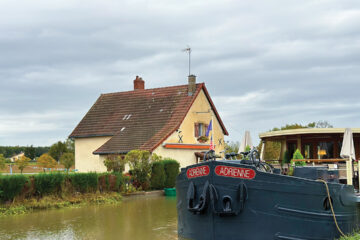Finding the Heart of India

India is elusive. Every time I think I’ve found the real deal and I understand “who” India is, I discover another aspect of the culture I never knew existed.
My first trip is a blur of mosques, tombs, forts, and temples — the historic landmarks that all novices feel compelled to visit. The second time around, I searched for the country’s traditional side. I learned about Ayurveda and yoga, took a short (and life-changing) course in Vedanta philosophy, and visited an ashram where saffron-robed devotees chant and set glowing candles afloat on the Ganges.
I was done. I got it — or so I thought until I met Jamshyd Sethna, owner of Banyan Tours, at an event in L.A. While he rhapsodized about the beauty of experiencing village life in the foothills of the Himalayas, I started planning my next trip.
“You haven’t been to India if you haven’t walked through at least a few of her many thousands of rural villages where life goes on pretty much the way it has forever,” he told me.
And he was right. I already knew that India is more than call centers and cities, but I had no idea how important agriculture is to this country until my husband and I walked (and drove) between villages in the Kumaon district many hours northeast of Delhi. Sethna has made this excursion very doable for overseas visitors by assembling a superb staff of guides, drivers, cooks, and hosts, and renovating and building houses that are a day’s walk apart.
Our “Shakti Village Walk” allowed us the rare opportunity to stay in villages untouched by tourism and witness the daily life of the people who live there. “Our” houses looked like all the others on the outside, but inside they offered bathrooms with Western-style plumbing and solar hot water, comfortable king beds with down comforters and pashmina blankets, attractive furnishings, and — in most cases — a wood stove and electricity. (www.shaktihimalaya.com)
Every morning started with “bed tea” delivered by the house host, followed by a delicious breakfast served al fresco with a valley or mountain view. Then, with the luggage loaded in a waiting car, we’d set out on foot with our guide Stanzin Thinless — a virtual encyclopedia of information on local plants, animals, geology, and customs.
In the forest we saw a few rhododendron trees with bright red flowers, but we were a couple of months early for their really spectacular blossom display. Instead, our flashes of color were the blue, orange, yellow, and fuchsia saris worn by every woman we encountered. Some were herding cows or goats into the forest to graze, others were walking along the road with huge bundles of firewood on their heads, and others were tending crops growing in steep terraces that had been cut into the hillsides.
The big take-home message for me was that these villages are the backbone of the Indian economy and the strength of their society. Everyone works hard — and together — in traditional roles for mutual benefit. The people care for the animals and the land and, in turn, the land and the animals provide for them.
Government schools are free, and I loved watching flocks of kids in their crisp little uniforms laughing and playing on the way home. One highlight of the trip was stopping at a school and delivering supplies we’d brought from San Diego.
In addition to creating the village walks, Sethna also built 360 Leti, an exclusive retreat near the borders of Nepal and Tibet. This remote lodge is comprised of four stunning guest pavilions and a main lounge and dining room area — all with a breathtaking view of the Himalayas. Many guests (including us) combine a few days at luxurious Leti with three or more days between villages.
Walking trails start from the lodge, but I gave in to temptation and hung up my hiking shoes while we were there. Instead, I took a cooking lesson from chef Yeshi Lama, who stole my heart with his memorable meals. While we stirred and chopped, I learned that this talented Tibetan was a monk until age 26, and that he’s since been featured in books on Indian cuisine.
I also studied the night sky and did a little yoga, but — honestly — what I will always remember about Leti is waking up to the view of the snow-white mountains and clear blue sky. Cuddled under my pashmina blanket, I gazed at the panorama through floor-to-ceiling, wall-to-wall windows long after the tea was cold. Outside nothing stirred and the only sound I heard was the distant voices of village children.
Once again, I was sure I had found the heart of India. ELIZBETH HANSEN
GETTING THERE & GETTING AROUND
British Airway’s nonstop flight from San Diego to London connects easily with a London-Delhi flight. We stayed at and enjoyed the Taj Mahal Hotel in Delhi.
To reach the Kumaon region, you have the choice of an overnight or daytime train from Delhi to Kathgodam — a 5½ hour trip — where your Shakti guide and driver will meet you. Village Walks operate in the Kumaon region from October to the end of April. For more information or to make a reservation, go to www.shaktihimalaya.com or contact Lucy Davison. (lucy@shaktihimalaya.com)
Guests are expected to bring appropriate clothing, including a light daypack. We also took hiking poles — and used them. Elegant picnic lunches are provided on walking days. Suitcases are transported between village houses by car, but the packs are handy for a camera, sunscreen, and extra layers of clothing.
Village houses are about nine miles apart, but keep in mind you’ll be walking at altitudes up to 8,000 feet. The good news is that a car is always nearby if you get tired. Previous Shakti clients include a German couple with a five-year-old child and a 79-year-old solo Australian woman. Roads are narrow and windy. If you’re prone to motion sickness, come prepared.
Groups are never mixed on Shakti Village Walks. Every single, couple, or family has the undivided attention of a well-informed guide who is sensitive to the preferences of his clients. At 360 Leti, up to four couples can be accommodated at one time.
All meals, lodging, guides, and drivers are included in one price. In fact, when my husband stopped in a market to make a small purchase, our guide Stanzin Thinless insisted on paying for it.
Because Shakti is committed to preserving the natural way of life in the villages, guests are asked not to give gifts or money to the local people. School supplies are the only exception.
About India in general: allow plenty of time for processing your visa application. Ask your doctor what vaccinations and medications are recommended.






Comments